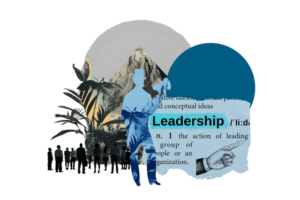What if one feels secure, psychologically speaking, at work? And what if this safety is not there? Data and studies on the subject tell us that it changes a lot. Safety is not simply an advantage but a real need. When it comes to psychological safety, it can make a difference: the positive impacts are not limited to the corporate climate but range from reducing turnover to increasing attachment to the organization and engagement, with a consequent improvement in company performance.
But what is explicitly psychological safety? And how is it achieved?
The context in which we live (and work) is becoming increasingly changeable and uncertain. On the one hand, this can be seen as a drive for innovation, improvement, and the stimulating search for ever-different solutions, but on the other hand, it affects something that remains a priority for human beings: safety.
In the pyramid of needs elaborated by the psychologist Abraham Maslow regarding the elements that foster motivation among people, safety occupies the second level, immediately above that relating to physiological needs. The concept of ‘safety’, which goes far beyond physical or economic safety but concerns psychological safety, is gaining increasing prominence today. The fact that this is becoming increasingly important to people means that, as a result, organizations also benefit from taking it into high consideration.
The concept of psychological safety was first codified in 1999 by Dr Amy Edmondson, a Harvard Business School lecturer. She defined it as the sense of safety that “at work is generated when a person is assured that he or she will not be punished or humiliated for voicing ideas, questions, concerns or mistakes”.
7 reasons to practice psychological safety in the company
The reason why psychological safety should be a priority for companies is that it is not simply a matter of making people feel good but also has essential feedback on the business: Dr Edmondson’s study A Safe Harbor: Social Psychological Factors Affecting Boundary Spanning in Work Teams shows how it decreases turnover rates, increases productivity and improves the quality of work. A more recent study also confirms the data, carried out by the Boston Consulting Group (Bcg), entitled Psychological Safety Levels the Playing Field for Employees: the survey involved more than 28,000 people from 16 countries, including Italy, and highlights the close relationship between psychological safety and permanence in the company. In fact, in environments perceived as psychologically safe, the tendency to resign is reduced by 2.7 times in a year; on the contrary, 6.9% of people working in contexts characterized by a low level of psychological safety state that they intend to leave their jobs within 12 months.
Research by InsideOut gave a complete picture of the benefits, highlighting seven concrete advantages. Specifically:
- Increased corporate well-being, which contributes to increased productivity and reduced stress
- Increased employee engagement because when people feel safe, they are more likely to perceive belonging to the company and involvement in activities as increased
- Strengthening of organizational culture, closely linked to motivation
- Reduction in turnover, a consequence of the fact that when talents feel valued, they have less reason to leave
- Stimulation of creativity, which increases in contexts where it feels safe to circulate new ideas and bring in personal initiatives
- Improved corporate image in the eyes of customers, suppliers, investors and even talent
- Increased productivity, since, as in a virtuous circle, all the elements listed above lead people to work to their full potential with consequent increases in performance
READ ALSO: DO WE THINK WE ARE WORTH MORE IN THE WORKPLACE BY HIDING WHO WE ARE?

Trust and diversity: two elements of psychological safety not to be forgotten
Unfortunately, psychological safety does not come by itself. Still, it has to be built, and this can be a long and demanding process, especially for those in the highest roles of the hierarchy, such as managers, executives, and C-levels.
Before asking how it is achieved, however, it is essential to remember that there are two fundamental pillars without which the challenge of psychological safety becomes very difficult. We are talking about trust and diversity.
Trust is the basis of all functioning relationships, including those within companies. In the workplace, however, we can divide trust into two types:
- practical trust is achieved by doing one’s job well and meeting the company’s expectations regarding attendance, punctuality and adherence to deliveries. What influences this is the feeling that everyone is ready and willing to work for a common goal, that people are reliable and that good execution of tasks is everyone’s ambition.
- Emotional trust: acts on a more relational level and relates to the bonds between work partners and managers. This type of trust is more challenging to build because it requires an extra step beyond the simple tasks asked. If there is emotional trust, the relationship means that the value generated by people is more significant than if the value of individuals were added together.
The second aspect that should be considered is diversity: those who manage people should always keep in mind that only some people react to psychological safety (or lack thereof) in the same way. Some people are more sensitive and attentive to this issue, such as women, people of colour or LGBTQIA+, people with disabilities or people from economically disadvantaged backgrounds: for these categories, moving to a safe working environment becomes even more relevant. The numbers prove it: in Italy, in contexts where psychological safety is not implemented, people with disabilities tend to leave the workplace 4.6 times more frequently than in contexts where it is present, while among women, the risk of leaving increases by 8%.
Psychological safety, therefore, helps corporate performance by decreasing turnover and attracting talent, as well as by fostering diversity and integration, with all the benefits that a more diverse and inclusive environment entails.
Creating psychological safety: how is it done?
It is indisputable that the most significant responsibility in building a safe working environment lies with the leaders or those who occupy high levels in the company hierarchy. Good help can come from coaching courses that give leaders the opportunity to train and practice behavioral skills that foster a climate in which psychological safety is perceived as very high.
Implementing of empathic leadership, in which the emotional feelings of the other are emphasized, communication takes place in an authentic and welcoming manner, and interaction between human beings is stimulated, is already a good start.
As we said, psychological safety is the culmination of a journey, which can be long and demanding at different levels depending on the context. Still, in any case, as psychologist Timothy R. Clark theorizes in his book The 4 Stages of Psychological Safety, it consists of four stages:
- inclusion, which is achieved when all those involved feel accepted in their uniqueness
- willingness to ask questions, learn and, above all, give and receive feedback
- contribution, which everyone makes in adding value to the organization’s activities and strategies
- challenge, i.e. the willingness to question the status quo whenever an opportunity for improvement arises.
To move from phase one to four, it is essential to bring about change in one’s teams, demonstrating, as leaders, a shift in perspective and behaviour that can foster a healthy and safe environment. Specifically, behaviours that could help include:
- Setting an example: we often ask ourselves what others can do, when the real question is what we can do. Leading by example, therefore, means adopting a different, more open, and inclusive way of doing things, and encouraging others to do the same.
- Looking at co-workers as allies, not adversaries: it is easy for feelings of competition to develop between people working together, especially in large and hierarchical contexts. Putting one’s ego aside and working on the common goal makes everyone feel more confident in speaking their mind, thus achieving greater and shared results.
- Speaking from human beings to human beings: communication in this field is crucial. Having a human approach (the empathic leadership mentioned earlier) and being able to radiate it to all co-workers helps relationships and thus makes everyone feel part of a safer network.
Giving and receiving feedback: in Coaching it is always said that feedback is a gift, but it is neither easy to give nor easy to receive. Knowing the most effective way to give feedback to others and being willing to accept the advice that comes allows everyone to be more open, authentic and respectful of the people around them.






